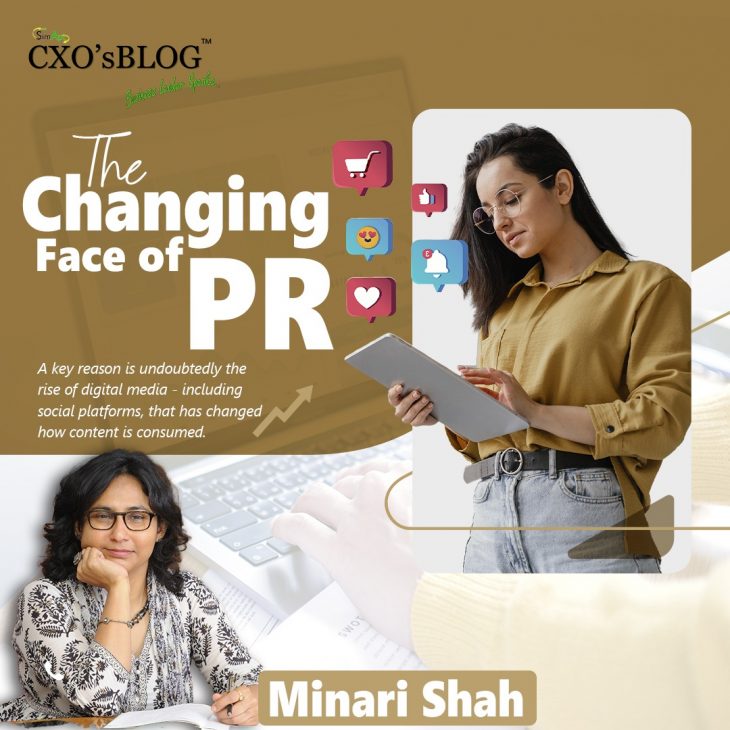Author: Minari Shah
Much has been written about how PR has changed/ is changing in recent times. A key reason is undoubtedly the rise of digital media — including social platforms, that has changed how content is consumed. It has brought in a stronger focus on content creation (especially visual), a new conversational tone, recognition of fragmented audiences that yet need consistent but relevant messaging across all of them. With these changes, companies now have a greater yet lesser control over the narrative: they can own the content not the response across millions of social media users that is instant and can be disruptive.
This has brought a fresh dynamism in PR while positing new questions on ownership: for eg. – is social media a marketing or PR function (it’s actually both!); who owns influencer relationships, who should respond to a customer issue on a social media platform – CS or PR; role of paid and earned media, and so on. Moreover, the social media platforms encourage a two-way conversation rather than a one-way targeted message, making it imperative for the story-telling to be outside-in. PR, traditionally skilled at the art of persuasion, therefore brings strong abilities to enable this more authentic conversation system across diverse audiences – internal & external. Companies are finding their own ways to redraw these boundaries through trial and error in ways that optimize impact; but what’s certain is it has significantly broadened the scope of PR.
While there is some continuing discussion about a seat at the table, most modern companies across the world recognize corporate reputation as key to leadership strategy. Consumers have repeatedly shown they care about a company’s culture, how it engages with communities, with environment, with its employees and vendors. Which means that a PR leader today must have broad-ranging perspective; able to counsel for issues as varying as new lines of business, taxation and legal, matters of international trade and geopolitics. PR must deal with questions on diversity – for instance, think about not just hiring policies but the #MeToo exposés, or the more recent debates on BLM that led to companies to announce their exit from fairness products.
With this broader scope for corporate reputation & its business impact, the focus is on building a brand narrative, a more far-reaching concept that brand positioning. In modern corporate structure therefore, brand is now co-owned by PR rather than only by marketing. The two teams must work closely, albeit with distinct roles, for a strategic long-term view to build a narrative framework that is consistent yet evolving over a period of time.
